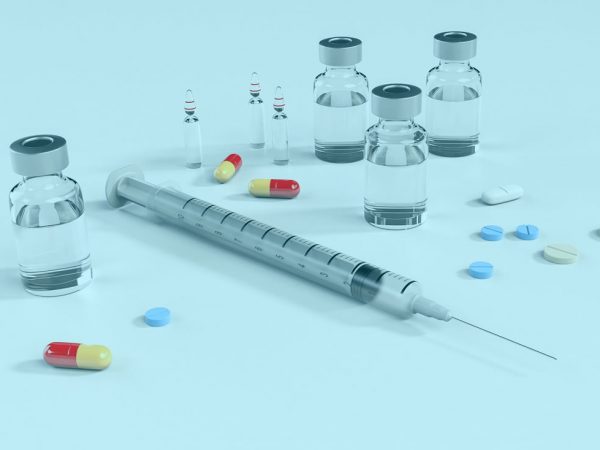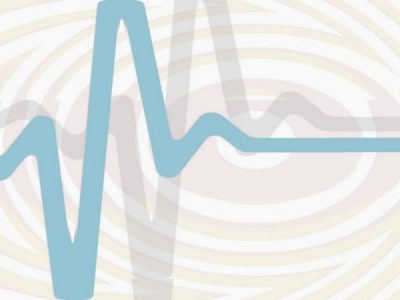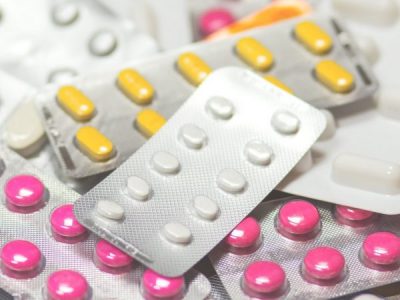Welcome to the equivalent dose and drug conversions / transfers / switching section of the website for physicians and pharmacists. This section features links to a wide range of clinical resources on equivalent doses and conversions for opioids, benzodiazepines, antidepressants, antipsychotics, corticosteroids and more. Furthermore, you can also find equivalent dose charts for some of the popular classes of medicines here.
Table of Contents:
- Proton pump inhibitors
- ACE inhibitors
- Angiotensin receptor blockers
- Beta blockers
- Doxazosin
- Dosage equivalence of statins
- Converting aminophylline to theophylline
- Equivalent tiotropium brands
- Equivalent doses of oral corticosteroids
- Potency of topical corticosteroids
- Equivalent opioid doses
- Conversion of gabapentin to pregabalin
- Parkinson’s disease medication conversion
- Switching antidepressants
- Citalopram tablet to oral drops
- Switching antipsychotics
- Haloperidol IM and oral
- Equivalent doses of oral benzodiazepines
- HRT equivalences
- Sulfonylurea equivalent doses
- Carbimazole & propylthiouracil equivalence
- Pyridostigmine to neostigmine
- Intravenous-to-oral switching
Proton Pump Inhibitor (PPI) Agents and Defined Daily Dose Equivalents
Table 2: PPI Agents and Defined Daily Dose Equivalents
- Source: ncbi.nlm.nih.gov
- Clinical Resource: Journal Article
- Register to Access Content: No
Interchangeable Use of Proton Pump Inhibitors Based on Relative Potency
We conclude that PPIs can be used interchangeably based on potency. Using twice-daily PPIs is more effective in increasing efficacy increasing once-daily PPI dosage. Omeprazole and lansoprazole (30 mg) and 20 mg of esomeprazole rabeprazole are functionally equivalent.
- Source: cghjournal.org
- Clinical Resource: Journal Article
- Register to Access Content: No
- Source: vhpharmsci.com
- Clinical Resource: Table
- Register to Access Content: No
Comparison of Angiotensin II Receptor Blockers (ARBs) – Vancouver Acute Pharmaceutical Sciences
- Source: vhpharmsci.com
- Clinical Resource: Table
- Register to Access Content: No
Angiotensin II Receptor Blockers (ARBs) Comparable Dose Chart
To help clinicians with selecting an alternative ARB, we wanted to share the following table of comparable doses
- Source: blogs.pharmacy.umaryland.edu
- Clinical Resource: Article
- Register to Access Content: No
Properties of Beta-Blockers – Vancouver Acute Pharmaceutical Sciences
- Source: vhpharmsci.com
- Clinical Resource: Table
- Register to Access Content: No
Appendix B Beta-Blockers (BB) > Page 2 – Beta-Blocker Equivalent Doses
- Source: gov.bc.ca
- Clinical Resource: Table
- Register to Access Content: No
Switching doxazosin XL tablets to doxazosin standard release tablets
Doxazosin XL tablets should not routinely be prescribed. Guidance is provided on switching doxazosin XL tablets to standard release tablets.
- Source: sps.nhs.uk
- Clinical Resource: Guidance
- Register to Access Content: No
- Source: vhpharmsci.com
- Clinical Resource: Table
- Register to Access Content: No
Statins are grouped into 3 different intensity categories according to the percentage reduction in low-density lipoprotein cholesterol:
a 20% to 30% reduction is low intensity
a 31% to 40% reduction is medium intensity
a reduction of more than 40% is high intensity.
- Source: nice.org.uk
- Clinical Resource: Guidelines
- Register to Access Content: No
Switching between aminophylline and theophylline in adult respiratory care
Intravenous aminophylline is used acutely for emergency respiratory conditions and we give a stepped approach on how to switch to oral theophylline
- Source: sps.nhs.uk
- Clinical Resource: Guidance
- Register to Access Content: No
Tiotropium dose equivalence and conversion of different brands
|
Brand |
Equivalent delivered dose of 10 micrograms tiotropium |
|---|---|
|
Spiriva |
One capsule |
|
Braltus |
One capsule |
Source: References 1-2
Approximate equivalent doses of oral corticosteroids
The equivalent doses are based on the anti-inflammatory potency.
|
Corticosteroids |
Dose equivalent to 5 mg of prednisolone |
|---|---|
|
Betamethasone |
600 microgram – 750 microgram |
|
Cortisone acetate |
25 mg |
|
Deflazacort |
6 mg |
|
Dexamethasone |
750 microgram |
|
Hydrocortisone |
20 mg |
|
Methylprednisolone |
4 mg |
|
Prednisone |
5mg |
|
Triamcinolone |
4mg |
Neither the mineralocorticoid effects nor the differences in the duration of action of the corticosteroids are considered in the table.
Source: Reference 3
Corticosteroid Conversion Table
- Source: med.umkc.edu
- Clinical Resource: Table
- Register to Access Content: No
Corticosteroid Equivalent Dose Calculator
sterconv.html is a Javascript application which converts milligrams of various corticosteroids to the equivalent dose of Methylprednisolone. The conversion data is adapted from Goodman and Gilman’s The Pharmacological Basis of Therapeutics, 9th ed.
- Source: hedwig.mgh.harvard.edu
- Clinical Resource: Calculator
- Register to Access Content: No
Corticosteroid Equivalent Dose Calculator
Corticosteroid Converter – based on anti-inflammatory potency
- Source: globalrph.com
- Clinical Resource: Calculator
- Register to Access Content: No
From the literature, prednisolone 5mg is approximately equivalent to hydrocortisone 20mg in terms of equivalent anti-inflammatory dose.
- Source: sps.nhs.uk
- Clinical Resource: Medicines Question and Answer
- Register to Access Content: No
Potency of Topical Corticosteroids (USA Classification)
Topical corticosteroids potency chart for USA
- Source: knowledgedose.com
- Clinical Resource: Chart
Potency of Topical Corticosteroids (UK Classification)
Topical corticosteroids potency chart for UK
- Source: knowledgedose.com
- Clinical Resource: Chart
Relative Potency of Selected Topical Corticosteroids
Topical corticosteroids range in potency from mild (class VII) to superpotent (class I— Relative Potency of Selected Topical Corticosteroids). Intrinsic differences in potency are attributable to fluorination or chlorination (halogenation) of the compound.
- Source: msdmanuals.com
- Clinical Resource: Table
- Register to Access Content: No
Dose Equivalents and Changing Opioids
Considerations when switching opioids
- Source: fpm.ac.uk
- Clinical Resource: Tables
- Register to Access Content: No
Opioid Conversion Ratios
Eastern Metropolitan Region Palliative Care Consortium
Opioid conversion is a specialist skill used by palliative care clinicians to ensure appropriate use of palliative medicines and that the patient receives optimal pain management. This document is intended for use by specialist palliative care clinicians. It also serves as an educational and clinical support resource for specialist clinicians when they are training other healthcare professionals who may be part of the extended multidisciplinary care team.
- Source: emrpcc.org.au
- Clinical Resource: Guideline
- Register to Access Content: No
Opioids and Methadone Equivalents for Clinicians
We provide an opioid conversion table for commonly used opioid preparations to help clinicians better understand the relationship between these agents and methadone. Conversion must take into consideration clinical issues that affect translation of equivalents to and from methadone.
- Source: nih.gov
- Clinical Resource: Journal Article
- Register to Access Content: No
A Guide to Equivalent Doses for Opioid Drugs
- Source: rowcrofthospice.org.uk
- Clinical Resource: Guide
- Register to Access Content: No
- Source: palliativecareguidelines.scot.nhs.uk
- Clinical Resource: Guidelines
- Register to Access Content: No
The dosage of a new opioid is based on several factors including the available equi-analgesic dose data, the clinical condition of the patient, concurrent medications and patient safety. It is recommended that the new dose should be reduced by 30-50% to allow for incomplete cross-tolerance. The patient should be monitored closely until stable when switching opioid medications.
- Source: olh.ie
- Clinical Resource: Chart
- Register to Access Content: No
Opioid dose conversion chart, syringe driver doses, rescue/PRN doses and opioid patches
Use the conversion chart to work out the equivalent doses of different opioid drugs by different routes
- Source: yorkhospitals.nhs.uk
- Clinical Resource: Chart
- Register to Access Content: No
Switching between oral morphine and other oral opioids in adult palliative cancer care patients
Switching between morphine and alternative opioids requires care and thoughtful application of a stepped process
- Source: sps.nhs.uk
- Clinical Resource: Guidance
- Register to Access Content: No
Conversion of Gabapentin to Pregabalin: Simple & easy
Dose equivalencies of Gabapentin & Pregabalin for the conversion protocol
- Source: apsoc.org.au
- Clinical Resource: Newsletter
- Register to Access Content: No
Gabapentinoids: when and how should they be prescribed?
How to switch between gabapentinoids or stop
- Source: bpac.org.nz
- Clinical Resource: Article
- Register to Access Content: No
Parkinson’s Disease ‘Nil by Mouth’ Medication Dose Calculator
In patients unable to take their usual PD medications orally, this tool is designed to convert a patient’s usual PD medications to a ‘Levodopa equivalent dose’ (LED).
The LED can then be used to calculate what dose of dispersible madopar should be given via a nasogastric tube to provide a patient with their usual amount of PD medication.
The tool also provides a conversion to a rotigotine patch dose.
- Source: pdmedcalc.co.uk
- Clinical Resource: Calculator
- Register to Access Content: No
Switching Antidepressants
The goal of this switching table is to offer a guide for physician and pharmacist in switching antidepressants. The table should be clear, easy to use and contains the most important information. Therefore, the table only contains the most commonly used antidepressants.
- Source: wiki.psychiatrienet.nl
- Clinical Resource: Table
- Register to Access Content: No
Conversion from citalopram tablets to citalopram drops or vice versa
Citalopram tablet to oral drops conversion
|
Eqivalent dose of citalopram tablet and drops |
|---|
|
10 mg citalopram tablet is equivalent to 8 mg (4 drops) citalopram drops |
|
20 mg citalopram tablet is equivalent to 16 mg (8 drops) citalopram drops |
|
30 mg citalopram tablet is equivalent to 24 mg (12 drops) citalopram drops |
|
40 mg citalopram tablet is equivalent to 32 mg (16 drops) citalopram drops |
Source: Reference 4
Switching Antipsychotics
The goal of this switching table is to offer a guide for physician and pharmacist in switching antipsychotics. The table should be clear, easy to use and contain the most important information. Therefore, the table only contains the most common or special antipsychotics. There is also a group ‘rest AP’, containing antipsychotics with the same switching advice.
- Source: wiki.psychiatrienet.nl
- Clinical Resource: Table
- Register to Access Content: No
Antipsychotic switching tool
This tool aims to assist prescribers when changing a patient’s antipsychotic treatment.
- Source: nps.org.au
- Clinical Resource: Tool
- Register to Access Content: No
Haloperidol IM and oral equivalent doses
- Source: hpft.nhs.uk
- Clinical Resource: Table
- Register to Access Content: No
Equivalent doses of oral benzodiazepines
Benzodiazepine equivalent chart
|
Benzodiazepine |
Dose equivalent to 5mg of diazepam |
|---|---|
|
Alprazolam |
0.25 mg |
|
Chlordiazepoxide |
12.5 – 15 mg |
|
Clobazam |
10 mg |
|
Clonazepam |
0.25 mg |
|
Flurazepam |
7.5 – 15 mg |
|
Loprazolam |
0.5 mg – 1.0 mg |
|
Lorazepam |
0.5 mg |
|
Lormetazepam |
0.5 – 1.0 mg |
|
Nitrazepam |
5 mg |
|
Oxazepam |
10 mg – 15 mg |
|
Temazepam |
10 mg |
Source: References 5-6
The Benzodiazepines > Potency
A large number of benzodiazepines are available. There are major differences in potency between different benzodiazepines, so that equivalent doses vary as much as 20-fold.
- Source: benzo.org.uk
- Clinical Resource: Manual
- Register to Access Content: No
- Source: sahealth.sa.gov.au
- Clinical Resource: Conversion Chart
- Register to Access Content: No
HRT preparations and equivalent alternatives
The British Menopause Society (BMS) has produced this document to provide guidance to
BMS members and clinical practitioners to provide information regarding equivalent HRT
preparations.
- Source: thebms.org.uk
- Clinical Resource: Document
- Register to Access Content: No
Australasian Menopause Society Guide to Equivalent MHT/HRT Doses Australia only
This Information Sheet has been developed as a guideline only to approximately equivalent doses of the different TGA registered MHT/HRT products available in Australia in May 2020. HRT is now referred to as Menopausal Hormone Therapy (MHT).
Australasian Menopause Society Guide to Equivalent MHT/HRT Doses New Zealand only
This Information Sheet has been developed as a guideline only to approximately equivalent doses of the different MHT/HRT products available in New Zealand in October 2019. HRT is now referred to as Menopausal Hormone Therapy (MHT).
- Source: menopause.org.au
- Clinical Resource: Information Sheets
- Register to Access Content: No
Sulfonylurea Equivalent Doses / Switching Advice
Switching between gliclazide MR and gliclazide standard release
Sulfonylurea equivalent dose chart
- Source: knowledgedose.com
- Clinical Resource: Summary
Equivalent doses of Carbimazole and Propylthiouracil
Converting carbimazole to propylthiouracil or vice versa
|
1 mg of Carbimazole = 10 mg of Propylthiouracil |
Source: Reference 7
Switching between neostigmine and pyridostigmine in myasthenia gravis
In some cases, the prescriber may wish to switch between oral pyridostigmine and parenteral neostigmine e.g. due to swallowing difficulties caused by worsening of myasthenia gravis. As symptoms of myasthenia gravis improve, a switch to an oral formulation may be preferred.
- Source: sps.nhs.uk
- Clinical Resource: Guidance
- Register to Access Content: No
Intravenous-to-Oral Switch Therapy
Switching from intravenous (IV) to oral (PO) therapy as soon as patients are clinically stable can reduce the length of hospitalization and lower associated costs. While intravenous medications may be more bioavailable and have greater effects, some oral drugs produce serum levels comparable to those of the parenteral form. Medications involved in switch therapy include antibiotics, analgesics, antipsychotics, and antivirals.
- Source: medscape.com
- Clinical Resource: Article
- Register to Access Content: Yes – registration is free
Resource links last checked: 28/03/2023
References
1. Boehringer Ingelheim Limited. Spiriva 18 microgram inhalation powder, hard capsule – Summary of Product Characteristics. Available at: https://www.medicines.org.uk/emc/product/1693/smpc [Accessed on 23/03/2023.
2. Teva UK Limited. Tiotropium (Braltus) 10mcg Inhalation Powder – Summary of Product Characteristics. Available at: https://www.medicines.org.uk/emc/product/4446 [Accessed on 23/03/2023].
3. Liu D, Ahmet A, Ward L, et al. A practical guide to the monitoring and management of the complications of systemic corticosteroid therapy. All Asth Clin Immun. 2013;9(30). Available at https://doi.org/10.1186/1710-1492-9-30 [Accessed on 29/12/2023].
4. Lundbeck Limited. Cipramil Drops 40 mg/ml – Summary of Product Characteristics. Available at: https://www.medicines.org.uk/emc/product/1392/smpc [Accessed on 23/03/2023].
5. NICE CKS. Benzodiazepine and z-drug withdrawal. April 2022. Available at: https://cks.nice.org.uk/topics/benzodiazepine-z-drug-withdrawal/prescribing-information/diazepam/ [Accessed 23/03/2023].
6. Clinical Guidelines on Drug Misuse and Dependence Update 2017 Independent Expert Working Group (2017) Drug misuse and dependence: UK guidelines on clinical management. London: Department of Health; 2017:119-122. Available at: https://www.gov.uk/government/publications/drug-misuse-and-dependence-uk-guidelines-on-clinical-management [Accessed 23/03/2023].
7. Imperial Centre for Endocrinology. Carbimazole and PTU information. Available at: http://www.imperialendo.com/for-patients/endocrine-services/thyroid-disorders/carbimazole-and-ptu [Accessed on 24/03/2023].



